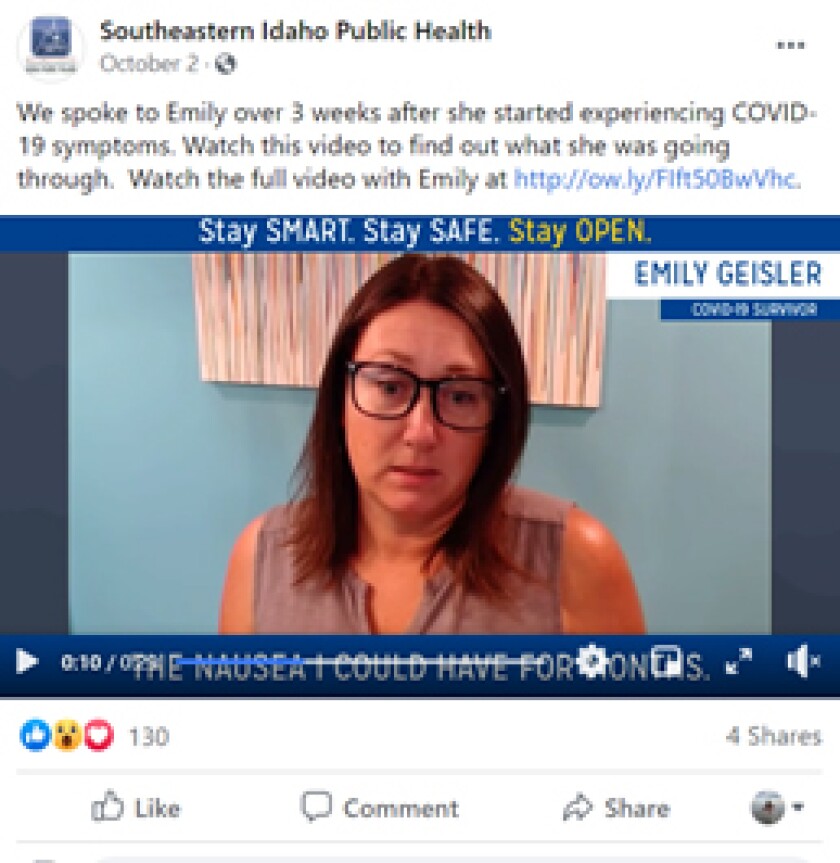Pocatello, Idaho’s Public Information department put their best foot forward in the fight against COVID-19. From the Idaho Governor’s initial stay-at-home order on March 27th, Public Information Officer Logan McDougall has ensured his community is well informed of coronavirus-induced changes, using multiple methods of communication already in the City’s toolkit to connect in a critical time. And it’s working: “Up to now, I would say the response [to our communication effort] has been good,” says McDougall.
I had the opportunity to connect with McDougall on the most effective tactics and lessons learned in the first six months of pandemic communication. Here’s how Pocatello uses all the tools in its toolkit, stays aligned with health experts, and is looking ahead to communication in the next six months.
At the beginning of the pandemic, what types of messages did your city need communicate to citizens?

Back in March, we started a COVID-19 resources page on our City website. In addition to being a catch-all for changes to City services, we were posting links to government and non-profit resources and assistance for citizens as we heard about them. While it’s not updated nearly as frequently as the early days of the pandemic, we continue to add to the page when we find something that could be of use to citizens. Our Webmaster, Rick Satterfield, has done a fantastic job of keeping the site in an easy to access format.”
How did your communication strategy shift?
McDougall: “Throughout the pandemic, we’ve been working very closely with our local health department, Southeastern Idaho Public Health (SIPH). We’re not health experts like SIPH, but what we do have is an audience through our social media, web, and mobile channels.”“We’ve focused on and will continue to amplify the messages of our health experts at SIPH by sharing their posts on social, sending their updates to our “news release” email list, and pushing notifications on mobile. Before COVID, we kept the info we were sharing related to City-specific items.”
Did any new communication tactics or platforms emerge as a result?

How did Pocatello use communication to fight against misinformation?
McDougall: “We’ve fought misinformation through our COVID-19 resources page and specifically when we added a ‘Mask Resources’ section. In other cases, we’ve referred people to Southeastern Idaho Public Health and their hotline for the latest on COVID-19 in southeast Idaho.”Today, now that we’re over six months in, what types of messages is your city communicating to citizens?

“I worked in T.V. news prior to the City and one thing I noticed was that individual stories from survivors weren’t being told. Working with SIPH and having a real, live person tell you about what having COVID is like has helped to show people the toll that the disease can take on a person.”
What role have technology and mobile played in communications and messaging?

How has your community responded to your communication efforts?
McDougall: “Up to now, I would say the response has been good. I’ve heard positive things about our use of the app in communicating the daily case numbers from Southeastern Idaho Public Health.”Which strategies or tactics have been most successful?
McDougall: “Social has been huge for us and especially putting real people out front in the posts. Recently, we just wrapped up a mini-campaign encouraging civility when citizens visit local businesses that has done well. Also, we highlighted different employees wearing their masks after face coverings were mandated at City facilities and the posts were very successful. Early on, we had Mayor [Brian] Blad do Facebook Live updates that did well.”If you could go back in time to the beginning of this year, what advice would you give yourself with regards to public information in the pandemic?
McDougall: “Be ready to turn on a dime, put on your breaking news hat and get to work. Don’t be afraid to put a personal touch on things.”“To expand, it’s about putting an actual face to what we are doing at the City rather than looking at the City as just an entity. A few examples would be spotlighting the masks being worn by employees in different departments, highlighting essential personnel, and the videos we’ve produced for Southeastern Idaho Public Health.
Looking ahead, what communication topics do you expect to emerge over the next six months?
McDougall: “My hope is we’ll be communicating information on vaccines but frankly, who knows. That said, we’ll be ready for anything. COVID-19 fatigue is setting in and we’re going to have to continue to get the message out to the public that they need to take this disease seriously.”“No matter what, we’ll still be in lock-step with our health experts at SIPH and getting the most up-to-date info out to the public.”
Government Messaging During COVID-19
Messaging across channels, both old and new, has helped Pocatello communicate important information with its community. Finding creative ways to capture attention through storytelling via social media and was an important part of COVID-19 messaging.Mobile emerged as a critical tool, serving as the gateway to residents’ pockets when regular methods of communication were disrupted. Though the Pocatello Connect app already existed, launching the use of its mass messaging functionality to send push notifications helped keep the community in the know.
As COVID-19 continues, so too will the need for Local Government communication. Like McDougall and the City of Pocatello, don’t be afraid to try new messaging methods, tap into technology, or add personal touches to your messaging strategy.








